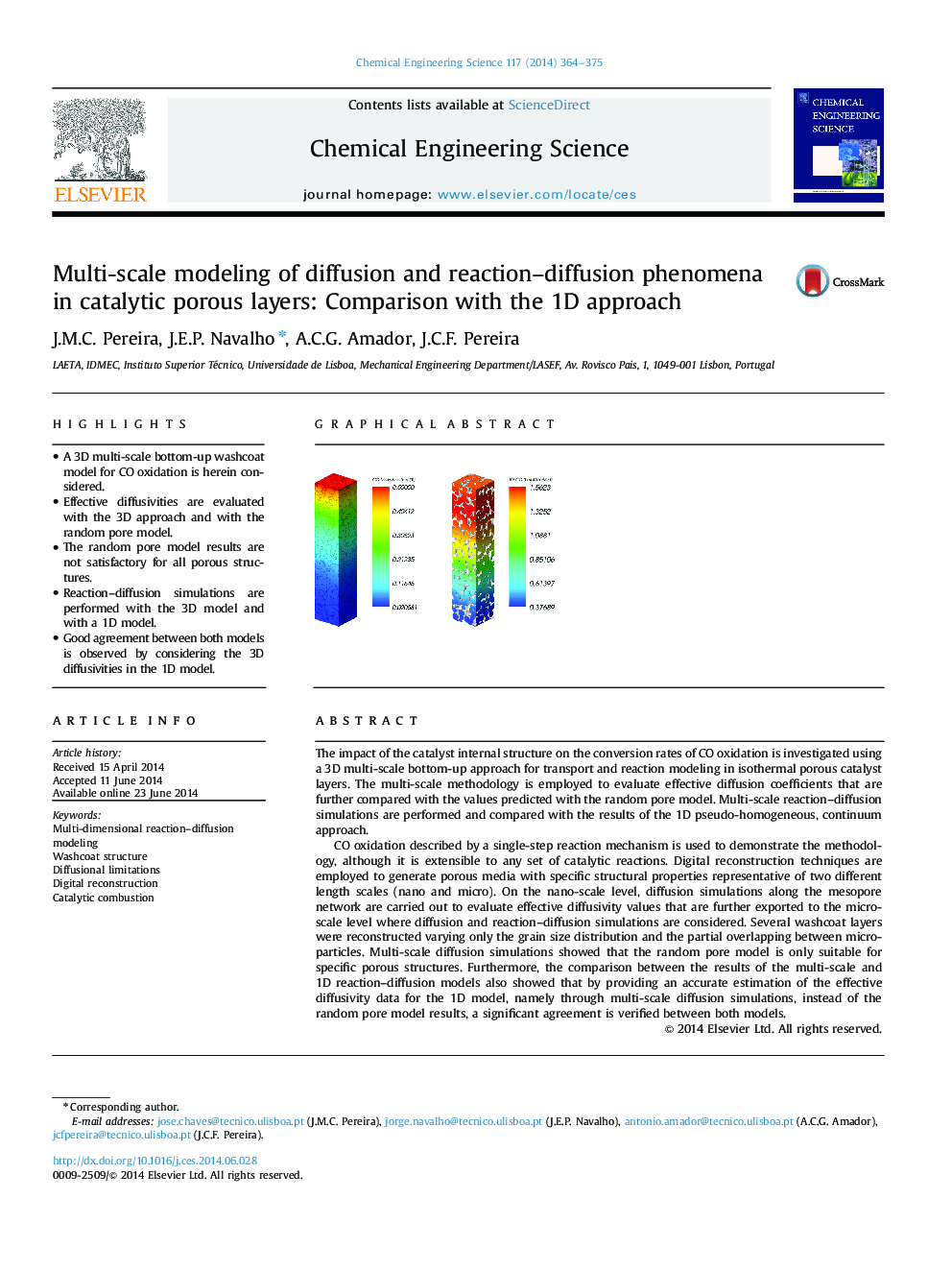| Article ID | Journal | Published Year | Pages | File Type |
|---|---|---|---|---|
| 154826 | Chemical Engineering Science | 2014 | 12 Pages |
•A 3D multi-scale bottom-up washcoat model for CO oxidation is herein considered.•Effective diffusivities are evaluated with the 3D approach and with the random pore model.•The random pore model results are not satisfactory for all porous structures.•Reaction–diffusion simulations are performed with the 3D model and with a 1D model.•Good agreement between both models is observed by considering the 3D diffusivities in the 1D model.
The impact of the catalyst internal structure on the conversion rates of CO oxidation is investigated using a 3D multi-scale bottom-up approach for transport and reaction modeling in isothermal porous catalyst layers. The multi-scale methodology is employed to evaluate effective diffusion coefficients that are further compared with the values predicted with the random pore model. Multi-scale reaction–diffusion simulations are performed and compared with the results of the 1D pseudo-homogeneous, continuum approach.CO oxidation described by a single-step reaction mechanism is used to demonstrate the methodology, although it is extensible to any set of catalytic reactions. Digital reconstruction techniques are employed to generate porous media with specific structural properties representative of two different length scales (nano and micro). On the nano-scale level, diffusion simulations along the mesopore network are carried out to evaluate effective diffusivity values that are further exported to the micro-scale level where diffusion and reaction–diffusion simulations are considered. Several washcoat layers were reconstructed varying only the grain size distribution and the partial overlapping between micro-particles. Multi-scale diffusion simulations showed that the random pore model is only suitable for specific porous structures. Furthermore, the comparison between the results of the multi-scale and 1D reaction–diffusion models also showed that by providing an accurate estimation of the effective diffusivity data for the 1D model, namely through multi-scale diffusion simulations, instead of the random pore model results, a significant agreement is verified between both models.
Graphical abstractFigure optionsDownload full-size imageDownload high-quality image (261 K)Download as PowerPoint slide
